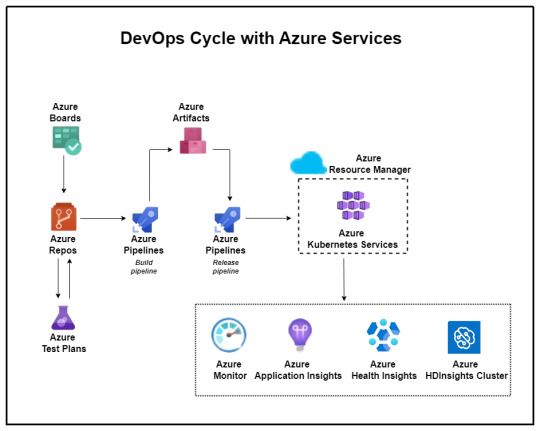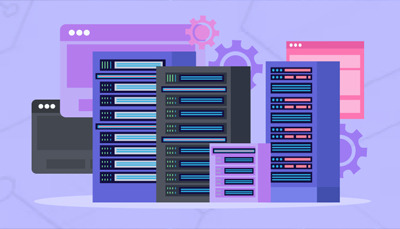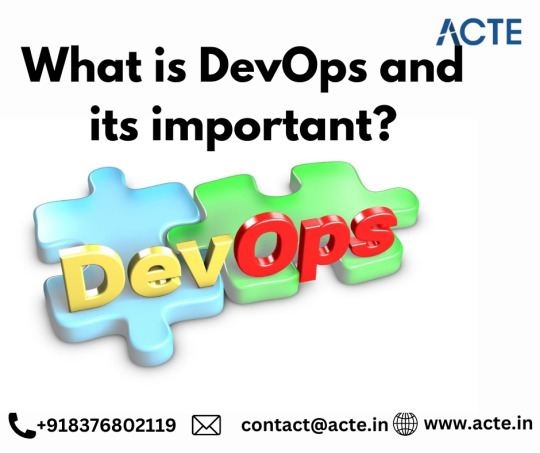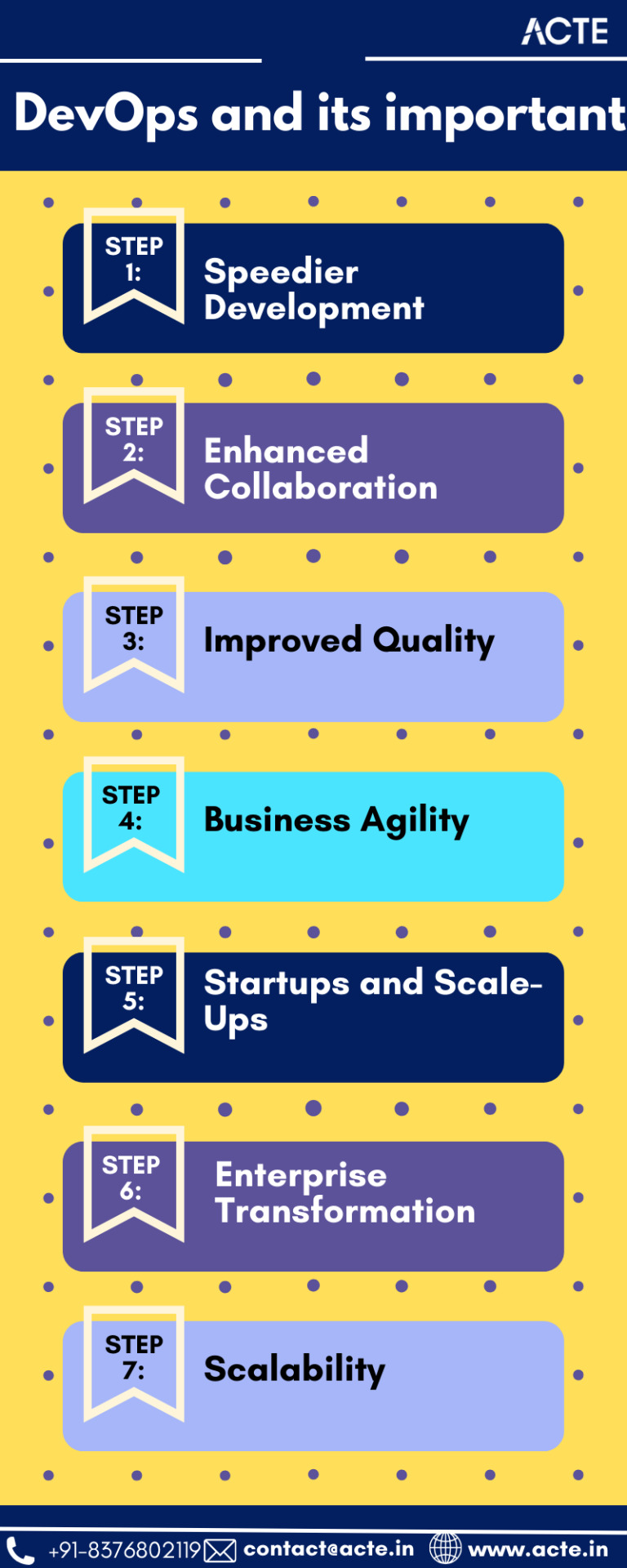#infrastructure as code
Explore tagged Tumblr posts
Text
1 note
·
View note
Text
Building Your Serverless Sandbox: A Detailed Guide to Multi-Environment Deployments (or How I Learned to Stop Worrying and Love the Cloud)
Introduction Welcome, intrepid serverless adventurers! In the wild world of cloud computing, creating a robust, multi-environment deployment pipeline is crucial for maintaining code quality and ensuring smooth transitions from development to production.Here is part 1 and part 2 of this series. Feel free to read them before continuing on. This guide will walk you through the process of setting…
#automation#aws#AWS S3#CI/CD#Cloud Architecture#cloud computing#cloud security#continuous deployment#DevOps#GitLab#GitLab CI#IAM#Infrastructure as Code#multi-environment deployment#OIDC#pipeline optimization#sandbox#serverless#software development#Terraform
0 notes
Text
Best Practices for Infrastructure as Code (IaC)
Hey there! If you're diving into the world of Infrastructure as Code (IaC), you're in for an exciting journey. IaC is all about managing and provisioning your infrastructure through code, making your deployments consistent, repeatable, and scalable. But like anything in tech, there are best practices to follow to make sure you're getting the most out of it. So, let's explore some key practices for effective IaC implementation that can make your life a whole lot easier!
Version Control for IaC
Why Version Control Matters
Alright, let's start with the basics. Why is version control so important for IaC? Imagine you're working on a complex infrastructure setup, and suddenly something breaks. Without version control, you're left scratching your head, wondering what went wrong. By using a version control system like Git, you can keep track of every change made to your IaC scripts. It's like having a rewind button for your infrastructure!
Tracking Changes and Collaboration
Version control isn't just about tracking changes; it's also a fantastic collaboration tool. When you're working with a team, everyone can work on different parts of the infrastructure without stepping on each other's toes. You can easily review changes, roll back to previous versions if something goes awry, and even experiment with new features in separate branches. It's all about teamwork and making sure everyone is on the same page.
Modular Design and Reusability
Creating Reusable Modules
Next up, let's talk about modular design and reusability. One of the best ways to streamline your IaC process is by creating reusable modules. Think of these modules as building blocks that you can mix and match across different projects. It saves time and ensures consistency. For example, if you've got a standard setup for deploying a web server, you can reuse that module whenever you need a web server, tweaking it only as necessary.
Encapsulation and Abstraction
When designing these modules, it's essential to encapsulate your infrastructure logic. This means hiding the complexity behind a simple interface. By doing so, you make it easier for others (and future you) to use these modules without needing to understand every detail. It's like driving a car; you don't need to know how the engine works to get from point A to point B.
Automated Testing and Validation
Testing IaC
Now, let's get into something super crucial: testing. Just like with any code, you want to catch errors before they make it to production. Automated testing for IaC scripts is your safety net. It helps you identify issues early on, saving you from potentially disastrous deployments.
Tools and Techniques
There are some fantastic tools out there for testing IaC. Terratest, for instance, is great for testing Terraform configurations, while Molecule is your go-to for testing Ansible playbooks. These tools allow you to run tests in isolated environments, ensuring that your scripts do what they're supposed to do. It's like having a practice run before the big game.
Security and Compliance
Ensuring Secure IaC
So, we've all heard horror stories about security breaches, right? In the world of IaC, security is just as critical as anywhere else in tech. When you're defining your infrastructure through code, you're also setting up security policies, permissions, and configurations. It's essential to scan your IaC scripts for vulnerabilities regularly. Tools like Checkov or TFLint can help you catch security issues before they go live. Trust me, a little prevention goes a long way!
Compliance Audits
Now, onto compliance. Whether you're working in healthcare, finance, or any other regulated industry, adhering to compliance standards is non-negotiable. IaC can make compliance audits a breeze. By codifying your infrastructure, you can create repeatable and auditable processes. This means you can quickly show auditors that your systems are up to snuff with industry regulations. It's like having a well-organized filing cabinet, but for your infrastructure!
Ensuring Best Practices with Professional Support
So, you've got your IaC scripts, version control, modular designs, and automated tests all set up. But what if you need a bit more help? This is where a DevOps services provider company comes in. These experts offer comprehensive support to implement best practices for IaC. They can guide you through the maze of tools and techniques, ensuring that your infrastructure is secure, compliant, and efficient. It's like having a personal trainer for your tech stack!
Final Thoughts
The Path to Effective IaC Implementation
Alright, let's wrap this up. Implementing Infrastructure as Code can be a game-changer for your organization. By following these best practices—using version control, designing reusable modules, testing your scripts, and ensuring security and compliance—you set yourself up for success. And remember, having professional guidance can make the journey smoother and more efficient. So, go ahead and dive into IaC with confidence, knowing that you've got a solid foundation to build on.
And there you have it, folks! That's the scoop on best practices for IaC. If you've got any questions or want to share your experiences, feel free to drop a comment. Happy coding!
Frequently Asked Questions (FAQs)
1. What is Infrastructure as Code (IaC) and why is it important?
Infrastructure as Code (IaC) is a method to manage and provision computer data centers through machine-readable scripts, rather than physical hardware configuration or interactive configuration tools. It's important because it automates and standardizes the deployment process, reducing manual errors, and speeding up the setup and scaling of infrastructure.
2. What are some best practices for implementing IaC?
Implementing IaC effectively involves several best practices, including using version control systems like Git, modularizing your infrastructure code for better reusability, and automating testing to catch errors early. It's also crucial to keep your IaC code secure by scanning for vulnerabilities and ensuring compliance with industry regulations.
3. How does version control help with IaC?
Version control systems help manage changes to IaC scripts, providing a history of changes, facilitating collaboration, and enabling rollback if something goes wrong. Tools like Git track every modification, making it easier to audit changes and maintain consistency across different environments.
4. What are the common tools used for Infrastructure as Code?
Common IaC tools include Terraform, Ansible, and Pulumi. Terraform is known for its broad compatibility with cloud providers and its declarative syntax. Ansible is popular for configuration management and orchestration, while Pulumi allows for infrastructure provisioning using standard programming languages like Python and TypeScript.
5. Why is automated testing important in IaC?
Automated testing in IaC ensures that infrastructure changes do not introduce errors or vulnerabilities. By running tests on your IaC scripts before deployment, you can catch issues early and maintain high reliability. Tools like Terratest and Molecule can automate these tests, providing continuous integration and delivery capabilities.
1 note
·
View note
Text
0 notes
Text
In cloud computing, the demand for speed, scalability, and reliability significantly influences IT infrastructure development strategies. As cloud ecosystems grow more complex and integral to operations, the potential security risks and points of failure increase. One pivotal innovation that aligns with these needs is Infrastructure as Code (IaC).
0 notes
Text
Driving Innovation: A Case Study on DevOps Implementation in BFSI Domain
Banking, Financial Services, and Insurance (BFSI), technology plays a pivotal role in driving innovation, efficiency, and customer satisfaction. However, for one BFSI company, the journey toward digital excellence was fraught with challenges in its software development and maintenance processes. With a diverse portfolio of applications and a significant portion outsourced to external vendors, the company grappled with inefficiencies that threatened its operational agility and competitiveness. Identified within this portfolio were 15 core applications deemed critical to the company’s operations, highlighting the urgency for transformative action.

Aspirations for the Future:
Looking ahead, the company envisioned a future state characterized by the establishment of a matured DevSecOps environment. This encompassed several key objectives:
Near-zero Touch Pipeline: Automating product development processes for infrastructure provisioning, application builds, deployments, and configuration changes.
Matured Source-code Management: Implementing robust source-code management processes, complete with review gates, to uphold quality standards.
Defined and Repeatable Release Process: Instituting a standardized release process fortified with quality and security gates to minimize deployment failures and bug leakage.
Modernization: Embracing the latest technological advancements to drive innovation and efficiency.
Common Processes Among Vendors: Establishing standardized processes to enhance understanding and control over the software development lifecycle (SDLC) across different vendors.
Challenges Along the Way:
The path to realizing this vision was beset with challenges, including:
Lack of Source Code Management
Absence of Documentation
Lack of Common Processes
Missing CI/CD and Automated Testing
No Branching and Merging Strategy
Inconsistent Sprint Execution
These challenges collectively hindered the company’s ability to achieve optimal software development, maintenance, and deployment processes. They underscored the critical need for foundational practices such as source code management, documentation, and standardized processes to be addressed comprehensively.
Proposed Solutions:
To overcome these obstacles and pave the way for transformation, the company proposed a phased implementation approach:
Stage 1: Implement Basic DevOps: Commencing with the implementation of fundamental DevOps practices, including source code management and CI/CD processes, for a select group of applications.
Stage 2: Modernization: Progressing towards a more advanced stage involving microservices architecture, test automation, security enhancements, and comprehensive monitoring.
To Expand Your Awareness: https://devopsenabler.com/contact-us
Injecting Security into the SDLC:
Recognizing the paramount importance of security, dedicated measures were introduced to fortify the software development lifecycle. These encompassed:
Security by Design
Secure Coding Practices
Static and Dynamic Application Security Testing (SAST/DAST)
Software Component Analysis
Security Operations
Realizing the Outcomes:
The proposed solution yielded promising outcomes aligned closely with the company’s future aspirations. Leveraging Microsoft Azure’s DevOps capabilities, the company witnessed:
Establishment of common processes and enhanced visibility across different vendors.
Implementation of Azure DevOps for organized version control, sprint planning, and streamlined workflows.
Automation of builds, deployments, and infrastructure provisioning through Azure Pipelines and Automation.
Improved code quality, security, and release management processes.
Transition to microservices architecture and comprehensive monitoring using Azure services.
The BFSI company embarked on a transformative journey towards establishing a matured DevSecOps environment. This journey, marked by challenges and triumphs, underscores the critical importance of innovation and adaptability in today’s rapidly evolving technological landscape. As the company continues to evolve and innovate, the adoption of DevSecOps principles will serve as a cornerstone in driving efficiency, security, and ultimately, the delivery of superior customer experiences in the dynamic realm of BFSI.
Contact Information:
Phone: 080-28473200 / +91 8880 38 18 58
Email: [email protected]
Address: DevOps Enabler & Co, 2nd Floor, F86 Building, ITI Limited, Doorvaninagar, Bangalore 560016.
#BFSI#DevSecOps#software development#maintenance#technology stack#source code management#CI/CD#automated testing#DevOps#microservices#security#Azure DevOps#infrastructure as code#ARM templates#code quality#release management#Kubernetes#testing automation#monitoring#security incident response#project management#agile methodology#software engineering
0 notes
Text
Installing GitLab, Runner, and Container Registry on Your Home Server
Everything You Need to Install GitLab, Runner, and Container Registry @gitlab #gitlab #devops #cicd #continuousintegration #continuousdeployment #iac #containers #homelab #homeserver #virtualization #vhtforums #selfhosted #selfhosting #nginxproxymanager
So, I wanted to create a concise guide to help you guys get up and running with GitLab, the GitLab Runner, and GitLab Registry. I spent quite a bit of time working on this in my home lab and hammering out the details so you don’t have to! Let’s look at everything you need to install GitLab, GitLab runner, and GitLab container registry. Table of contentsWhy GitLab?My setupPrerequisites and…

View On WordPress
0 notes
Text

MACH Architecture and Cloud Infrastructure: A Powerful Combination for a New Programme with PII Requirements
The Challenge: was to design and implement an appropriate infrastructure for a new programme with ambiguous specifications and no knowledge of the potential audience. This program aimed to support various global markets with different needs and preferences.
In software delivery, working on a greenfield project is a rare and challenging opportunity. It is exciting because we can design the system ground up without being constrained by the legacy and using business requirements to shape the system. However, it is also daunting because the scale and the boundaries of the project are unclear.
One of the most complex requirements were around PII (Personally Identifiable Information). The rules and the regulations for PII vary significantly among countries, which creates additional complexity and overhead in terms of business rules, implementation and infrastructure.
In addition to the challenges with requirements, being an Agile program, we anticipate many changes and adjustments as the product is used by the consumer. We will iterate and respond to the consumer feedback promptly.
The Solution: was to build a cloud-based application following MACH architecture. MACH is a modern approach to software development that stands for Microservices, API-first, Cloud-native, and Headless.
Cloud infrastructure allowed us to scale up and down easily as needed. This flexibility was crucial, as we had no data on the required infrastructure for the project. Therefore, we started with minimal resources and let the system scale and evolve based on the data we collected. Moreover, we avoided the infrastructure cost when it was not necessary, and only paid for what we used.
Thanks to cloud’s flexibility we could scale in isolation for each region if needed, making the system adaptable for each market. This feature was very beneficial within the context of PII, as we could create fully isolated regions within the same project.
We chose AWS as our primary cloud provider and some parts of the system used Azure because of the business requirements. Fortunately with today’s technology, different cloud providers can work together within the same project.
Akamai, which is a Content Delivery Network (CDN), created our ecosystem with strong security features. Security was very vital, as global reach came with global risks. Akamai’s AI powered and machine learning models protected our system from malicious bot detection to various attack vectors.
Being a small development team, we utilised automation where we could. Using infrastructure as code (IaC), we developed one-click environment creation from scratch, so that the product could be deployed anywhere AWS operates. This feature was especially useful in the context of PII, to comply with local regulations.
For one-click environment creations, we used Terraform with well-defined and documented roles and permissions. Terraform is a tool that allows teams to define and manage infrastructure as code. Terraform also helped us to track changes, and enabled collaboration within the team. As infrastructure was codified we avoided all the ambiguities of manual changes of the settings and configurations which helped us to troubleshoot quickly and efficiently when needed.
Following MACH architecture and utilising the latest cloud technology made this project possible with its small budget, tough timeline and limited resources.
#MACH#aws#cloud#infrastructure as code#leadership#Azure#international#azure#cloud computing#cloud infrastructure
0 notes
Text
Don't Just Sit There! Start DevOps and Its Important
In the rapidly evolving landscape of software development, the term "DevOps" has become a buzzword. But what exactly is DevOps, and why is it gaining such widespread recognition and adoption? In this blog post, we'll unravel the concept of DevOps, exploring its core principles and delving into the reasons why it has become indispensable for modern businesses.
Unlocking the code of success through DevOps training in Bangalore – where collaboration meets innovation, shaping a digital masterpiece. 🚀💻 #DevOpsExcellence #InnovateWithCollaboration #TechRevolution

Understanding DevOps:
DevOps is a culture, a set of practices, and an approach that aims to bridge the gap between software development (Dev) and IT operations (Ops). It emphasizes collaboration, communication, and integration between these traditionally siloed teams throughout the entire software development lifecycle. The primary goal of DevOps is to enable organizations to deliver high-quality software at a faster pace, ensuring continuous integration, delivery, and deployment.
Why DevOps Matters:
Increased Efficiency: DevOps streamlines the development process, reducing manual intervention and accelerating the release cycle. This results in quicker delivery of features and updates, ultimately enhancing time-to-market.
Higher Quality Software: Continuous integration and automated testing in a DevOps environment contribute to the production of higher-quality software. Early detection of issues allows for timely resolutions, minimizing the presence of bugs and vulnerabilities.
Enhanced Collaboration: DevOps breaks down traditional barriers between teams, fostering a culture of shared responsibility. This collaborative environment leads to improved communication, understanding, and a more cohesive workflow.
Adaptability to Change: In today's dynamic business landscape, the ability to adapt quickly is paramount. DevOps enables organizations to respond rapidly to changing market demands, ensuring they stay competitive and innovative.

5. Startups and Scale-Ups
Agile Growth: DevOps is particularly beneficial for startups and scale-ups experiencing rapid growth. It ensures that the pace of development aligns with the increasing demands of a growing user base.
Cost-Efficiency: Startups often operate on tight budgets. DevOps helps optimize resources, reduce downtime, and achieve cost efficiency.
6. Enterprise Transformation
Cultural Shift: For large enterprises, adopting DevOps often involves a cultural shift. It encourages collaboration and transparency, breaking down traditional hierarchical barriers.
Risk Mitigation: DevOps practices contribute to risk mitigation by identifying and addressing issues early in the development process, reducing the likelihood of costly errors in production.Dive into the world of possibilities with DevOps online courses – sculpting your tech future, one virtual lesson at a time. 💻🌐 #TechSculptor #DevOpsSkills #VirtualClassroom"
7. Scalability:
As organizations grow, scalability becomes a crucial factor. DevOps practices enable seamless scalability by providing the tools and processes needed to handle increased workloads without sacrificing efficiency or compromising system stability.
DevOps is not just a set of tools; it's a cultural shift that empowers organizations to thrive in the fast-paced world of technology. By promoting collaboration, automation, and continuous improvement, DevOps has emerged as a fundamental approach for businesses seeking to remain agile, efficient, and customer-focused in the digital age. Embracing DevOps isn't just about adopting new practices; it's about cultivating a mindset that values collaboration, innovation, and excellence in every line of code.
#DevOps engineer#DevOps principles#Automation in DevOps#Cloud technologies#Monitoring tools#Infrastructure as Code#DevOps roadmap#IT career#DevOps success.
0 notes
Video
youtube
Terraform Tutorial & Project Setup | Create AWS EC2 Instance Using Terra... Full Video Link - https://youtu.be/Vf6g1EB3ukQ Check out this new video on the CodeOneDigest YouTube channel! Learn terraform tool and infrastructure as code with example. Learn how to create aws resources using terraform scripts. #video #terraform #iac #infrastructureascode #aws #codeonedigest@java @awscloud @AWSCloudIndia @YouTube @codeonedigest #aws #terraform #iac #infrastructureascode #aws #terraform #devops #awscloud #awstraining #awstutorial #terraformtutorial #terraformtutorialforbeginners #terraformdevopstutorial #terraformprojectaws #terraformprojectstructure #terraformprojectsforbeginners #terraformfundamentals #terraformscriptforec2instance #terraformscripttocreateec2instance #terraformscripttutorial #createec2instanceusingterraform #createec2instanceinaws #terraformvariablestutorial #terraformvariables #tfvstfvars
1 note
·
View note
Text
Exciting Mock interview with DevOps/AWS engineer #devops #cloud #aws #devopsengineer #cloudengineer
Interviewer: Welcome to this exciting mock interview for the role of a DevOps/AWS Engineer! Today, we have an enthusiastic candidate eager to showcase their skills. Let’s begin! Candidate: Thank you! I’m thrilled to be here. Interviewer: Great to have you. Let’s start with a classic question: What attracted you to the field of DevOps and working with AWS? Candidate: DevOps combines my passion…

View On WordPress
#Automation#AWS#CI/CD#cloud engineering#cloud technology#collaboration#communication#continuous integration#cost optimization#cross-functional teams#DevOps#disaster recovery#high availability#IaC#incident management#infrastructure as code#mock interview#performance optimization#scalability#security#tech trends
0 notes
Text
GitLab Environments: Your Cloud Playground Blueprint
Remember when you were a kid and tried to build the ultimate LEGO castle? You had all these cool pieces, but figuring out how they fit together was the real challenge. Well, welcome to the grown-up version: building your serverless cloud playground! Let’s take a bird’s-eye view of our LEGO set… err, I mean, our solution components. The Grand Blueprint: Components Overview Imagine you’re an…
#aws#CI/CD Pipeline#Cloud Architecture#DevOps Automation#GitLab Environments#GitLab Runner#Infrastructure as Code#OIDC Integration#Parallel Environments#Secure Cloud Access#Serverless Development#Terraform State Management
0 notes
Text
Premature Internet Activists

I'm on a 20+ city book tour for my new novel PICKS AND SHOVELS. Catch me TOMORROW (Feb 14) in BOSTON for FREE at BOSKONE , and SATURDAY (Feb 15) for a virtual event with YANIS VAROUFAKIS. More tour dates here.

"Premature antifacist" was a sarcastic term used by leftists caught up in the Red Scare to describe themselves, as they came under ideological suspicion for having traveled to Spain to fight against Franco's fascists before the US entered WWII and declared war against the business-friendly, anticommunist fascist Axis powers of Italy, Spain, and, of course, Germany:
https://www.google.com/books/edition/In_Denial/fBSbKS1FlegC?hl=en&gbpv=1&bsq=%22premature+anti-fascist%22&pg=PA277&printsec=frontcover
The joke was that opposing fascism made you an enemy of America – unless you did so after the rest of America had woken up to the existential threat of a global fascist takeover. What's more, if you were a "premature antifascist," you got no credit for fighting fascism early on. Quite the contrary: fighting fascism before the rest of the US caught up with you didn't make you prescient – it made you a pariah.
I've been thinking a lot about premature antifascism these days, as literal fascists use the internet to coordinate a global authoritarian takeover that represents an existential threat to a habitable planet and human thriving. In light of that, it's hard to argue that the internet is politically irrelevant, and that fights over the regulation, governance, and structure of the internet are somehow unserious.
And yet, it wasn't very long ago that tech policy was widely derided as a frivolous pursuit, and that tech organizing was dismissed as "slacktivism":
https://www.newyorker.com/magazine/2010/10/04/small-change-malcolm-gladwell
Elevating concerns about the internet's destiny to the level of human rights struggle was delusional, a glorified argument about the rules for forums where sad nerds argued about Star Trek. If you worried that Napster-era copyright battles would make it easy to remove online content by claiming that it infringed copyright, you were just carrying water for music pirates. If you thought that legalizing and universalizing encryption technology would safeguard human rights, you were a fool who had no idea that real human rights battles involved confronting Bull Connor in the streets, not suing the NSA in a federal courtroom.
And now here we are. Congress has failed to update consumer privacy law since 1988 (when they banned video store clerks from blabbing about your VHS rentals). Mass surveillance enables everything from ransomware, pig butchering and identity theft to state surveillance of "domestic enemies," from trans people to immigrants. What's more, the commercial and state surveillance apparatus are, in fact, as single institution: states protect corporations from privacy law so that corporations can create and maintain population-scale nonconsensual dossiers on all the intimate facts of our lives, which governments raid at will, treating them as an off-the-books surveillance dragnet:
https://pluralistic.net/2023/08/16/the-second-best-time-is-now/#the-point-of-a-system-is-what-it-does
Our speech forums have been captured by billionaires who censor anti-oligarchic political speech, and who spy on dissident users in order to aid in political repression. Bogus copyright claims are used to remove or suppress disfavorable news reports of elite rapists, thieves, war criminals and murderers:
https://pluralistic.net/2024/06/27/nuke-first/#ask-questions-never
You'd be hard pressed to find someone who'd describe the fights over tech governance in 2025 as frivolous or disconnected from "real politics"
This is where the premature antifascist stuff comes in. An emerging revisionist history of internet activism would have you believe that the first generation of tech liberation activists weren't fighting for a free, open internet – we were just shilling for tech companies. The P2P wars weren't about speech, privacy and decentralization – they were just a way to help the tech sector fight the entertainment industry. DRM fights weren't about preserving your right to repair, to privacy, and to accessibility – they were just about making it easy to upload movies to Kazaa. Fighting for universal access to encryption wasn't about defending everyday people from corporate and state surveillance – it was just a way to help terrorists and child abusers stay out of sight of cops.
Of course, now these fights are all about real things. Now we need to worry about centralization, interoperability, lock-in, surveillance, speech, and repair. But the people – like me – who've been fighting over this stuff for a quarter-century? We've gone from "unserious fools who mistook tech battles for human rights fights" to "useful idiots for tech companies" in an eyeblink.
"Premature Internet Activists," in other words.
This isn't merely ironic or frustrating – it's dangerous. Approaching tech activism without a historical foundation can lead people badly astray. For example, many modern tech critics think that Section 230 of the Communications Decency Act (which makes internet users liable for illegal speech acts, while immunizing entities that host that speech) is a "giveaway to Big Tech" and want to see it abolished.
Boy is this dangerous. CDA 230 is necessary for anyone who wants to offer a place for people to meet and discuss anything. Without CDA 230, no one could safely host a Mastodon server, or set up the long-elusive federated Bluesky servers. Hell, you couldn't even host a group-chat or message board:
https://www.techdirt.com/2020/06/23/hello-youve-been-referred-here-because-youre-wrong-about-section-230-communications-decency-act/
Getting rid of CDA 230 won't get rid of Facebook or make it clean up its act. It will just make it impossible for anyone to offer an alternative to Facebook, permanently enshrining Zuck's dominance over our digital future. That's why Mark Zuckerberg wants to kill Section 230:
https://www.nbcnews.com/tech/tech-news/zuckerberg-calls-changes-techs-section-230-protections-rcna486
Defending policies that make it easier to host speech isn't the same thing as defending tech companies' profits, though these do sometimes overlap. When tech platforms have their users' back – even for self-serving reasons – they create legal precedents and strong norms that protect everyone. Like when Apple stood up to the FBI on refusing to break its encryption:
https://en.wikipedia.org/wiki/Apple%E2%80%93FBI_encryption_dispute
If Apple had caved on that one, it would be far harder for, say, Signal to stand up to demands that it weaken its privacy guarantees. I'm no fan of Apple, and I would never mistake Tim Cook – who owes his CEOhood to his role in moving Apple production to Chinese sweatshops that are so brutal they had to install suicide nets – for a human rights defender. But I cheered on Apple in its fight against the FBI, and I will cheer them again, if they stand up to the UK government's demand to break their encryption:
https://www.bbc.com/news/articles/c20g288yldko
This doesn't make me a shill for Apple. I don't care if Apple makes or loses another dime. I care about Apple's users and their privacy. That's why I criticize Apple when they compromise their users' privacy for profit:
https://pluralistic.net/2024/01/12/youre-holding-it-wrong/#if-dishwashers-were-iphones
The same goes for fights over scraping. I hate AI companies as much as anyone, but boy is it a mistake to support calls to ban scraping in the name of fighting AI:
https://pluralistic.net/2023/09/17/how-to-think-about-scraping/
It's scraping that lets us track paid political disinformation on Facebook (Facebook isn't going to tell us about it):
https://pluralistic.net/2021/08/05/comprehensive-sex-ed/#quis-custodiet-ipsos-zuck
And it's scraping that let us rescue all the CDC and NIH data that Musk's broccoli-hair brownshirts deleted on behalf of DOGE:
https://www.cnet.com/tech/services-and-software/how-to-access-important-health-info-thats-been-scrubbed-from-the-cdc-site/
It's such a huge mistake to assume that anything corporations want is bad for the internet. There are many times when commercial interests dovetail with online human rights. That's not a defense of capitalism, it's a critique of capitalism that acknowledges that profits do sometimes coincide with the public interest, an argument that Marx and Engels devote Chapter One of The Communist Manifesto to:
https://www.nytimes.com/2022/10/31/books/review/a-spectre-haunting-china-mieville.html
In the early 1990s, Al Gore led the "National Information Infrastructure" hearings, better known as the "Information Superhighway" hearings. Gore's objective was to transfer control over the internet from the military to civilian institutions. It's true that these institutions were largely (but not exclusively) commercial entities seeking to make a buck on the internet. It's also true that much of that transfer could have been to public institutions rather than private hands.
But I've lately – and repeatedly – heard this moment described (by my fellow leftists) as the "privatization" of the internet. This is strictly true, but it's even more true to say that it was the demilitarization of the internet. In other words, corporations didn't take over functions performed by, say, the FCC – they took over from the Pentagon. Leftists have no business pining for the days when the internet was controlled by the Department of Defense.
Caring about the technological dimension of human rights 30 years ago – or hell, 40 years ago – doesn't make you a corporate stooge who wanted to launch a thousand investment bubbles. It makes you someone who understood, from the start, that digital rights are human rights, that cyberspace would inevitably evert into meatspace, and that the rules, norms and infrastructure we built for the net would someday be as consequential as any other political decision.
I'm proud to be a Premature Internet Activist. I just celebrated my 23rd year with the Electronic Frontier Foundation, and yesterday, we sued Elon Musk and DOGE:
https://www.eff.org/press/releases/eff-sues-opm-doge-and-musk-endangering-privacy-millions

If you'd like an essay-formatted version of this post to read or share, here's a link to it on pluralistic.net, my surveillance-free, ad-free, tracker-free blog:
https://pluralistic.net/2025/02/13/digital-rights/#are-human-rights

Image: Felix Winkelnkemper (modified) https://commons.wikimedia.org/wiki/File:Acoustic_Coupler.jpg
CC BY-SA 4.0 https://creativecommons.org/licenses/by-sa/4.0/deed.en
#pluralistic#eff#malcolm gladwell#section 230#copyright#copyfight#privacy#code is speech#napster#creative commons#premature antifascist#trustbusting#antitrust#al gore#nii#national information infrastructure hearings#demilitarization#information superhighway#clicktivism
514 notes
·
View notes
Text
0 notes
Text


baby hannie
for @hongjoongpresent
#i remember watching this skz code at my mom's house and her being extremely confused#stray kids#createskz#han jisung#hyunjin#3rachasource#forhanji#bystay#userbeepls#usertsu#leenope#userjinnie#userlau#usersun#usersa#userlluna#usermask#okay back to writing my paper on fucking internet infrastructure#a topic i picked for myself for some reason#mine
459 notes
·
View notes
Text
My best friend and I moved in together with his closest friend from his MA program, and while I had met her before (the friend; my bff is a man), we hadn't spent much time together because I've never lived away from the West Coast (and only two years out of the PNW) and she's never lived outside of North Carolina and only briefly visited the PNW once, when she went to Portland last year.
It's been a delight to show her around the PNW and realize we need to explain things that are just sort of omnipresent in our lives. The bff and I were casually griping with each other about having to run an errand to Trader Joe's at an inconvenient hour, and were telling her, "it's okay, you can stay in the car and avoid the people if you want" and she was like "NO I MUST SEE IT, I'VE ONLY HEARD OF THEM" and nearly ascended to another plane when we showed her around the store.
The bff and I grew up in the same town in NW Washington (him for his first 18 years, me from 9 to 19) and he lived in Bellingham and Seattle for years before he went to NC for grad school (I went to the SF Bay Area for mine, a very different experience). Both of them are hardcore coffee aficionados, but he struggled with the different Coffee Ways of the South, so for the true PNW experience they want to tour various indie coffeeshops next.
Also, she adores Kaidan in Mass Effect and we were like, oh, is your passport up to date? We could take a trip sometime and show you your boyfriend's beloved English Bay. It's very beautiful :)
her: O_O
me: Actually, it's worth going to Vancouver BC for its own sake as well, it's truly spectacular. We used to go all the time as kids.
bff: And Victoria!
her: O_O
#as much as i very openly love my homeland (read: the pnw. sometimes the whole west coast) at all times#it is truly special to experience it through someone who's never lived anywhere remotely near here. she's never seen vegas or seattle or la#we were super hungry after moving stuff yesterday and the bff was like 'i'm not sure i have a real restaurant in me...#let's just pick up some stuff from jack in the box'#her: 'what's a jack in the box?'#even the department store chains we're used to are different#also she's queer and was concerned about having queer friendly dating options out here and we're like '...oh sweetie'#and since she's from eastern nc we were also explaining that the pacific ocean up here is not like the atlantic#her: 'what are your hurricanes like?' us: '... we um. don't really have them'#then we were like... i mean rainier's lahars are going to melt seattle someday but these are infrequent events#and there will be seismic warnings. even mt st helens gave some warning!#i think the only disappointment for her so far was our building codes (she's very into proper infrastructure)#the roads are nice but our buildings are not designed for combating nature by her standards#it's interesting because we're so unused to the idea of nature as generally something to combat#in fairness someone from say astoria might think about that differently or in very rural areas. but in the parts we're familiar with#usually 'natural' dangers are 'poorly timed human fuckery' and things like rain generally come as friends#like yeah don't go antagonizing a bear or cougar or moose or whatnot but you'd really have to go out of your way#anghraine babbles#cascadia blogging#the adventures of space redacted#anghraine's gaming#us american blogging#i should probably have a bff tag#long post
31 notes
·
View notes